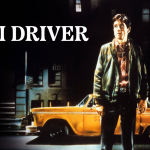A Christmas Carol (2009)

A Christmas Carol is a 2009 animated adaptation of Charles Dickens’ classic novella, directed by Robert Zemeckis. This version brings the timeless tale of Ebenezer Scrooge to life using groundbreaking motion capture technology, creating a visually stunning and immersive experience. Featuring the voice talents of Jim Carrey as Scrooge, as well as other notable actors like Gary Oldman and Colin Firth, the film captures the essence of Dickens’ beloved story about redemption, compassion, and the true spirit of Christmas.
The narrative follows Ebenezer Scrooge, a miserly old man who embodies greed and selfishness. On Christmas Eve, he is visited by the ghost of his former business partner, Jacob Marley, who warns him of the consequences of his life choices. Marley, bound in chains, informs Scrooge that he will be visited by three spirits: the Ghost of Christmas Past, the Ghost of Christmas Present, and the Ghost of Christmas Yet to Come. Through these encounters, Scrooge is forced to confront his past actions, the impact of his current behavior, and the bleak future that awaits him if he does not change his ways.
Zemeckis’s direction is marked by a unique visual style that blends realism with elements of fantasy. The use of motion capture allows for expressive character animations, giving life to the ghosts and the various settings in a way that enhances the story’s emotional depth. The film’s visuals are rich and detailed, creating a vibrant depiction of Victorian London that immerses viewers in the world of Dickens’ creation.

Jim Carrey’s performance as Scrooge is multifaceted, showcasing his ability to convey a wide range of emotions—from the cold, callous nature of Scrooge at the beginning to his eventual transformation into a warm, generous man. Carrey also voices the three spirits, each of whom embodies different aspects of Scrooge’s journey. His portrayal adds a layer of humor and poignancy to the character, making Scrooge’s redemption arc both relatable and impactful.
The film’s screenplay remains faithful to the original novella while incorporating modern touches that enhance its appeal to contemporary audiences. The dialogue captures Dickens’ wit and social commentary, highlighting themes of compassion, generosity, and the importance of community. The story serves as a reminder of the transformative power of kindness and the significance of human connection, particularly during the holiday season.

The score, composed by Alan Silvestri, complements the film’s emotional landscape, with sweeping melodies that evoke a sense of nostalgia and wonder. The music enhances key moments in the narrative, reinforcing the emotional stakes as Scrooge confronts his past and re-evaluates his life choices.
A Christmas Carol has received praise for its animation, voice performances, and faithful adaptation of Dickens’ work. While some critics noted the film’s darker tones and visual intensity, many appreciated its ability to capture the essence of the original story while making it accessible to a new generation. The film’s message about the importance of compassion and redemption resonates deeply, making it a fitting addition to the canon of holiday films.

In conclusion, A Christmas Carol (2009) is a visually captivating and emotionally resonant adaptation of Charles Dickens’ classic tale. With its innovative animation, strong performances, and timeless themes, the film successfully conveys the story’s core message about the importance of love, generosity, and the possibility of change. Robert Zemeckis’s direction brings a fresh perspective to this beloved story, ensuring that it continues to touch the hearts of audiences during the holiday season and beyond. Ultimately, the film serves as a reminder that it is never too late to embrace the spirit of Christmas and the power of redemption.











